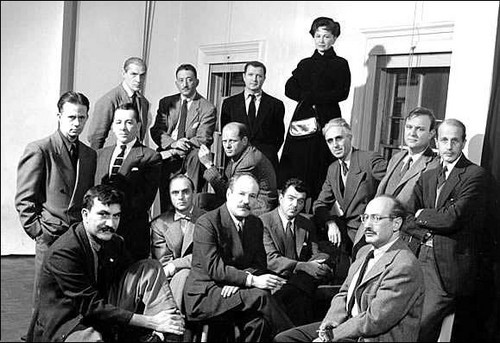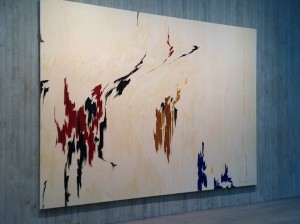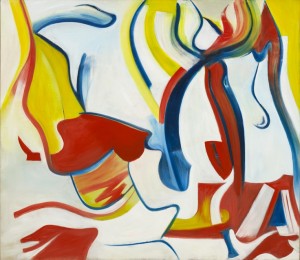
Best of 2011: Clyfford Still in Denver, De Kooning at MoMA
On November 22, I visited the newly opened Clyfford Still museum in Denver, which for the first time presented the artist’s work as it developed, in stages, visually highlighting how Still got from landscapes and figures to abstraction. A few days later I was in New York taking in the Willem De Kooning retrospective at MoMA. The retrospective covered De Kooning’s development as a painter from the earliest years until his latest works from the 1980s.
In 1944, Clyfford Still made the first abstract expressionist painting, in Richmond, Virginia: “1944-N No.1”

In 1945 in New York, Willem de Kooning merged together his Cubist and Surrealist tendencies into a figurative abstract called Pink Angels, which is considered his first abstract expressionist work.

I was struck by how individually these artists each approached the figure and how they both used the figure to get to abstraction. Both created figure ground ambiguity in their work and both toyed with Cubism, flattening the picture plane and distorting perspective. But De Kooning remained within the edges of the painting whereas Still exploded beyond them. In the late 1940s, De Kooning was painting his infamous women with their toothy grins and large eyes. His use of paint explosive and expressive. In the late 1940s Still was creating lush fields of thick pigment and ever larger abstractions.
In 1950, Still politely ended his relationship with dealer Betty Parsons and in 1961 he moved to a farm near Westminster, Maryland. Aside from a few select gifts of paintings to museums, Still rarely exhibited his work. But he continued to explore abstraction, with it’s jagged shapes and zippers, only with more open space, less thick pigment, until his death in 1980, when all his works that were not in the public domain, were sealed from both public and scholarly viewing until the opening of the Clyfford Still museum in Denver.

In 1963, De Kooning moved to East Hampton, Long Island. His paintings began referencing the landscape and he created a number of cast bronze sculptures. By the 1980s, suffering from alcoholism and dementia, De Kooning’s paintings became more sparse and graphic, featuring amorphic lines with shapes of color, less dense and more open and airy than his earlier works.

Both are giants of abstract expressionism. Their influence on artists working today is significant. De Kooning’s probably more so than Still because less of his works have been available for viewing until now. It was DeKooning who first explored the use of black and white in painting out of necessity. He couldn’t afford to buy pigments. Many others of the New York based abstract expressionists went on to explore and create black and white paintings: Pollock, Motherwell, Barnett Newman and Franz Kline. Still also worked with only black and white, but often the white was bare canvas.
There is something about Still’s work that is decisively Western. Adjunct curator of the Still museum, David Anfam suggests that Still considered a painting’s surface to be “hostile terrain.” And Christopher Knight wrote in his recent review of the inaugural exhibition that “1944-N No. 1 doesn’t describe a hard-bitten natural landscape so much as create a painterly equivalent for one.” I suppose the same could be said for DeKooning’s women, that he has created the painterly equivalent of a woman. But in Still’s works, the expansiveness is something found in the West, not in New York or Europe. The thick, built up black surfaces are liberating and mysterious, colored by force and energy, by possibility splitting the canvas from it’s frame, creating a seemingly limitless view.
